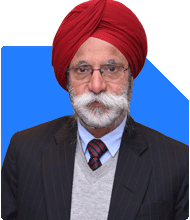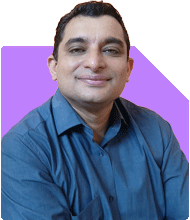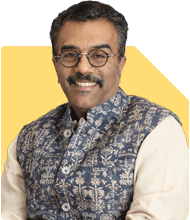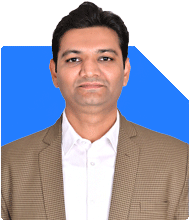Need Expert Advice?Our Gurus Can Help
Purshotam Lal |34 Answers |Ask -Follow
Financial Planner, MF and Insurance Expert - Answered on Sep 24, 2025

Purshotam Lal |34 Answers |Ask -Follow
Financial Planner, MF and Insurance Expert - Answered on Sep 24, 2025

Vipul Bhavsar |121 Answers |Ask -Follow
Tax Expert - Answered on Sep 24, 2025

Various other points like whether the land is rural, agriculture or other land is required to be ascertained.
Vipul Bhavsar
Chartered Accountant
www.capitalca.in
Reetika Sharma |164 Answers |Ask -Follow
Financial Planner, MF and Insurance Expert - Answered on Sep 24, 2025

The 70 lakhs can be invested in equity and hybrid mutual funds to get maximum returns. You can get 13 to 20% returns based on market conditions for long term. It is best for you to work with an advisor in this regard.
Hence kindly consult a a professional Certified Financial Planner - a CFP who can guide you with exact funds to invest in keeping in mind your age, requirements, financial goals and risk profile.
Best Regards,
Reetika Sharma, Certified Financial Planner
https://www.instagram.com/cfpreetika/
Vipul Bhavsar |121 Answers |Ask -Follow
Tax Expert - Answered on Sep 24, 2025

Vipul Bhavsar
Chartered Accountant
www.capitalca.in
Reetika Sharma |164 Answers |Ask -Follow
Financial Planner, MF and Insurance Expert - Answered on Sep 24, 2025

Portfolios are usually looked by a Research Analysts or you can choose a Portfolio Management Services.
For mutual fund portfolio, get in touch with a professional Certified Financial Planner - a CFP, can check your portfolio and guide you with exact funds to invest in keeping in mind your age, requirements, financial goals and risk profile.
Best Regards,
Reetika Sharma, Certified Financial Planner
https://www.instagram.com/cfpreetika/
Reetika Sharma |164 Answers |Ask -Follow
Financial Planner, MF and Insurance Expert - Answered on Sep 24, 2025

You can connect with a a professional Certified Financial Planner - a CFP to start investing in Mutual Funds with proper guidance and strategy. A CFP will guide you with exact funds to invest in keeping in mind your age, requirements, financial goals and risk profile.
Best Regards,
Reetika Sharma, Certified Financial Planner
https://www.instagram.com/cfpreetika/
Purshotam Lal |34 Answers |Ask -Follow
Financial Planner, MF and Insurance Expert - Answered on Sep 24, 2025

Reetika Sharma |164 Answers |Ask -Follow
Financial Planner, MF and Insurance Expert - Answered on Sep 24, 2025

You can reach 2 crore in 15 years assuming a return of 15%. The funds you mentioned and the amount of 8000 in each one doesn't seem to be in alignment with the 15% return.
You need to stop chasing the return and change the allocation of funds to a different set of funds.
If you get 1 13% cagr with an annual stepup of 10%yearly, you will get 3 crores after 15 years.
Hence a proper strategy with right fund allocation can help you in achieveing your goal.
You can also consult a a professional Certified Financial Planner - a CFP who can guide you with exact funds to invest in keeping in mind your age, requirements, financial goals and risk profile.
Best Regards,
Reetika Sharma, Certified Financial Planner
https://www.instagram.com/cfpreetika/
Purshotam Lal |34 Answers |Ask -Follow
Financial Planner, MF and Insurance Expert - Answered on Sep 24, 2025

- What is rediffGurus?
- rediffGurus™ is a unique platform that brings together leading Experts in one place. It has four sections -- Health, Money, Relationships and Careers. In each of these sections, there are Experts waiting to help you.
- How will I benefit from rediffGurus?
- Just tell us what's bothering you by submitting your question. We will find the most appropriate Expert to offer you advice. When the Expert answers your question, you will receive an alert on your email ID.
- Can I directly contact an expert?
- Yes, you can submit your question directly to an Expert of your choice on our website. When the Expert answers your question, you will get an alert on your registered email ID/mobile number.
- Can I ask my questions anonymously?
- Sure, you can also ask your questions anonymously. And don't worry; though your identity will not be publicly displayed, you will still receive an alert on your registered email ID/mobile number when the Expert answers your question.
- Do I have to create a personal account to access rediffGurus?
- Yes, you have to register using your mobile number and email ID. Registration is free. When our Expert replies to your question, you will immediately get an alert on your registered email ID/phone number. You can also follow your favourite Experts and get daily newsletters about the questions they have answered. Login using your credentials anytime to see the complete list of the questions you have asked and the responses you have received.
- I can get an instant answer to any question on the internet. How is rediffGurus different?
- rediffGurus is different because, here, you get a 'personalised answer' to each question you ask. Real Experts (and NOT bots!) will go through your question and provide the most appropriate response. You can use the advice of our Experts to make informed decisions.
Close

















